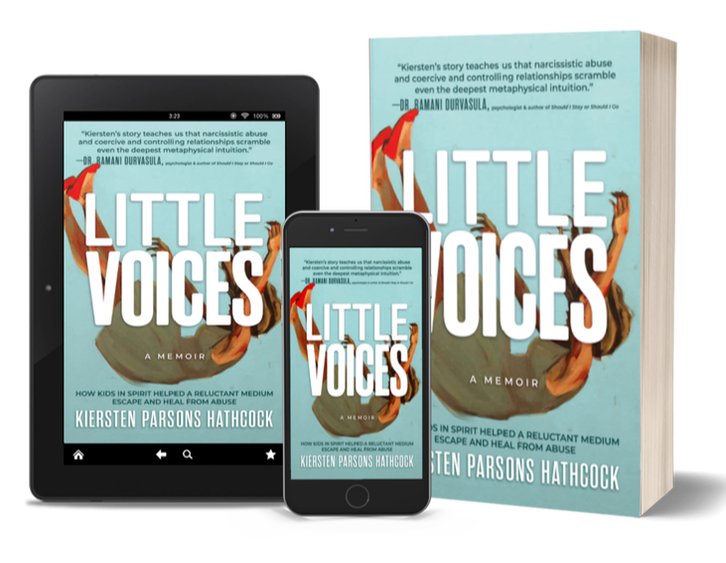|
For 36 years, I ignored signs and synchronicity. To this day, I still miss them sometimes. Ya know, those things called life, kids, work, school, grocery shopping, and 9th grade math homework that I don't understand get in the way. But tonight—tonight was different. I sent a message to a dear friend of mine I've known for many, many years. We were catching up on life on text while we were both helping our kiddos. A little while before reaching out to her, I was looking through the Little Light Project website blog looking for a post Scott had written a long time ago about what it's like to have a "psychic" wife. I couldn't find it, but I did find a recap of an event we went to in Sedona in 2013. Alongside spritual thought leaders like Jean Houston, a doctor by the name of Dr. Rajiv Parti shared his near death experience (NDE) on the Sedona World Wisdom Days stage. It was extremely powerful, to say the least. I hadn't laid my eyes on this blog in five years, and frankly, I'd forgotten about the doctor and his incredibly journey. I actually didn't pay much attention to the blog other than to look at some photos and remember that I had my picure taken with Jean. I didn't even see Dr. Parti's portion of the blog. Now, let's go back to my friend and our text chat. I sometimes forget that she, too, survived a near death experience. All of the sudden, as we're chatting, I start paying attention to chills and signs as she's sharing thoughts she's never expressed before. As you can imagine, it's quite an adjustment after you die and come back. I share what I'm feeling for her and getting intutiively, as I do when this happens. Out of nowhere, I remember that I was looking for that blog post and I check the tab at the top of my screen. Staring straight at me is the blog post about Jean Huston and wouldn't you know it, Dr. Parti's story. His section was literally looking me in the eye. I started reading it and then I sent it to my friend who read it and said she could relate to much of what he said. She also said, "Wow!" at the synchronicity of the events. We don't talk about the NDE much. We haven't in awhile but tonight, we did. And tonight of all nights, before talking with her, I "accidentally" found the blog that addressed an NDE story I'd totally forgotten about. One that, if you believe in synchronicity, you would say she was meant to read. I'm beyond grateful to feel like a kid, again—after living mostly in survival mode (through abuse) from 2014-2017—looking at life through a magical, multidimensional lens in wonder and awe. Turns out, when things calm down and you get your center back, the whole world opens up. And the whole world conspires WITH you. As C.G. Jung said, "Synchronicity is an ever present reality for those who have eyes to see." May we never close our eyes. Ever. P.S. If you've experienced a near death experience and are trying to come to grips with it, check the book, 37 Seconds, written by Stephanie Arnold. She's the real deal, a beautiful human being, and a fantastic writer. Thank you for sharing your journey, Steph. <3
1 Comment
The other night, I received a message from a childhood friend. We don’t connect much at all but she took the time to tell me she is leaving her abusive husband. I had no idea she was in this type of a relationship. She said she felt so blind for so long, which is not the first time I’ve been told this by women I know. Nor is it foreign to me—I felt blind in my relationship. She thanked me for being a voice and said she reads everything that I write. I felt happy to be there for her in some small way, but I also felt the weight of her words when I read them, and I felt intuitively what so many of us feel—we beat ourselves up for staying so long.
Last night, Scott and I watched Brene Brown’s Ted Talk on the topic of shame. It got me thinking about how I felt truly blind to reality of what I had gotten myself into on many levels because he was such a good manipulator, but then when I finally started to acknowledge the levels of abuse I was allowing/enduring, I felt so much shame. Adding insult to injury, I felt MORE shame because I had a tough time staying out of the relationship for good. In fact, I packed up his things twice and eventually shipped them the second time. What happened the first time? Well, I let him back in. I didn’t believe I deserved the treatment I was getting so when people would suggest maybe I was lacking self-confidence, it wouldn’t sit right with me. I'd get kinda mad, actually. It wasn't about self-esteem. I knew who I was and most importantly, I liked who I had become AND I knew what real love was supposed to feel like. More than anything, I believed he was still the guy he presented himself to be in the beginning and I couldn’t figure out why it was so hard for him to just be that guy, again. I believed in him. When he went to see my therapist, I believed he really wanted to get to the bottom of his anger and pain for himself, and for me. I simply believed. One thing I never considered was what was happening to me chemically, inside my mind and body. I had no idea that a big part of the reason I kept going back to him was because I was literally conditioned and addicted. I just thought I wasn’t “strong enough” and that led to, you guessed it, more shame. Shahida Arabi shares in her article, YOUR BRAIN ON LOVE, SEX AND THE NARCISSIST: THE ADDICTION TO BONDING WITH OUR ABUSERS, that “recovering from an abusive relationship can be similar to withdrawal from drug addiction due to the biochemical bonds we may develop with our toxic ex-partners.” She goes on to explain the biochemical bonds that make it extremely difficult to leave these types of relationships. In Shahida’s words, here’s what may be keeping you addicted, or was keeping you addicted to a relationship dripping in narcisssistic abuse: 1) Oxytocin. This hormone, known famously as the “cuddle” or “love hormone,” is released during touching, orgasm and sexual intercourse; it promotes attachment and trust. It is the same hormone released by the hypothalamus that enables bonding between mother and child. During “lovebombing” and mirroring in the idealization phases with our abusive partners, it’s likely that our bond to them is quite strong as a result of this hormone. Intermittent reinforcement of positive behaviors dispersed throughout the abuse cycle (e.g. gifts, flowers, compliments, sex) ensures that we still release oxytocin even after experiencing incidents of abuse. I’ve heard from many survivors who reminisce about the great sexual relationship they had with the narcissist, containing an electrifying sexual chemistry they feel unable to achieve with future partners. This is because charming emotional predators such as narcissists are able to mirror our deepest sexual and emotional desires, which leads to a strong sexual bond, which then, of course, releases oxytocin, and promotes even more trust and attachment. Meanwhile, the narcissist, who is usually devoid of empathy and does not form these types of close attachments, is able to move onto his or her next source of supply without much thought or remorse. The addictive nature of oxytocin is also gendered according to Susan Kuchinskas, author of the book, The Chemistry of Connection: How the Oxytocin Response Can Help You Find Trust, Intimacy and Love. The unfortunate fact is that estrogen promotes the effects of oxytocin bonding whereas testosterone discourages it. This makes it more difficult for females in any typeof relationship to detach from the bond as quickly as men. 2) Dopamine. The same neurotransmitter that is responsible for cocaine addiction is the same one responsible for addiction to dangerous romantic partners. According to Harvard Health, both drugs and intense, pleasurable memories trigger dopamine and create reward circuits in the brain, essentially telling the brain to “do it again.” Do you remember recalling the pleasurable, beautiful first moments with your narcissistic partner? The romantic dates, the sweet compliments and praise, the incredible sex – long after you two had broken up? Yeah – it’s releasing the dopamine in your brain that’s telling you to “do it again.” The salience theory of dopamine suggests that our brain releases dopamine not just for pleasurable events but to important ones that are linked to survival. As Samantha Smithstein, Psy.d,puts it, “Dopamine is not just a messenger that dictates what feels good; it is also tells the brain what is important and what to pay attention to in order to survive. And the more powerful the experience is, the stronger the message is to the brain to repeat the activity for survival.” Abuse survivors are unfortunately hijacked by dopamine. Abusive tactics like intermittent reinforcement works well with our dopamine system, because studies show that dopamine flows more readily when the rewards are given out on unpredictable schedule rather than predictably after conditioned cues. So the random sweet nothings whispered to us after an incident of emotional abuse, the apologies, the pity ploys, the rare displays of tenderness during the devaluation phase, right before another incident of abuse – actually help cement this type of reward circuit rather than deter it. Combine this with powerful experiences of abuse which alert our brain to “pay attention” as well as pleasurable memories we recollect over and over again – and we’ve got ourselves a biochemical bond from hell. 3) Cortisol, Adrenaline and Norepinephrine. Cortisol is a stress hormone, and boy, does it get released during the traumatic highs and lows of an abusive relationship. It is released by the adrenal glands in response to fear as part of the “fight or flight” mechanism. Since we are unlikely to have a physical outlet of release when cortisol is triggered during cycles of emotional abuse, this often traps the stress within our bodies instead. As we ruminate over incidents of abuse, increased levels of cortisol lead to more and more health problems. Christopher Bergland suggests numerous ways to counteract the effects of this hormone, which include physical activity, mindfulness, meditation, laughter, music and social connectivity. Adrenaline and norepinephrine also prepare our body for the flight or fight response, and are also culprits in biochemical reactions to our abusers. Adrenaline promotes an antidepressant effect, triggering fear and anxiety which then releases dopamine – this can cause us to become “adrenaline junkies,” addicted to the rush of vacillating between bonding and betrayal. During No Contact, withdrawal from that “rush” can be incredibly painful. 4) Trauma bonding. All of these jolts of fear and anxiety in the face of danger can reenact past traumas and create trauma bonding. Trauma bonding occurs after intense, emotional experiences with our abusers and tethers us to them, creating subconscious patterns of attachment that are very difficult to detach from. It is part of the phenomenon known as Stockholm Syndrome, in which victims of hostage become attached to their perpetrators and even defend their captors. Although survivors of narcissistic abuse come from many different backgrounds and anyone can be a victim of narcissistic abuse, trauma bonding is even more significant for those who grow up in violent or emotionally abusive homes, and/or have had a narcissistic parent in addition to their most recent experiences with trauma and abuse. Survivors of multiple incidents of abuse by various narcissistic individuals can further reinforce subconscious wounds they experienced in childhood in the trauma bond with their current abusers. If there has been victimization in the past, such as the experience of having to survive in an abusive household, this can lead to trauma repetition or reenactment, the root of which Gary Reece, Ph.D in his article, “The Trauma Bond,” calls “relational trauma”: “The key to understanding behavior found in abusive relationships is to look at the very early years of childhood. Relational trauma is at the root….There are several features these kinds of relationships have in common. The first is, they are deeply ambivalent, reflective of the Trauma Bond: fear, dependency, need, fear of abandonment, despair, the realization of helplessness, and rage. This is an amalgam of very powerful emotions which drive and make the relationship so unstable…The second feature of this kind of relationship is that it is a compulsive reenactment. Allan Schore, an attachment expert put it this way. “A further complication of unresolved trauma is narrative reenactment of the trauma wherein the victim unconsciously recreates the original traumatic event over and over.” (Handbook for Treatment of Attachment Trauma, pg. 35) For more information on trauma bonding, please see The Betrayal Bond: Breaking Free of Exploitative Relationships by Patrick Carnes. It is important to understand the various types of biochemical and psychological bonds that often create attachments between abusers and their victims. Better understanding these bonds enables us to move past victim-blaming and move forward into greater understanding, compassion and support for survivors who struggle with leaving abusive relationships. We must not judge but continue to empower ourselves and others with this newfound knowledge. Sally Dail and I didn't know each other until one day, she happened upon one of my blog posts. Here's the thing: we survived similar abuse, which made us instant sisters, in a way. I'm so grateful that she is #standingthefuckup for all of us who have been through similar emotional and verbal abuse. Sally penned a very moving blog post on her site www.galsaljo.com. I encourage you to check it out. (Click the button below or the photo above for the article.) To Scott,
Thank you for loving me; really loving me. As you have discovered over the years, I have many "real" parts.....and you've loved all of them, through every stage and phase. Even through separation. On this Valentine's Day, I'm beyond grateful for our life and our love. Becoming real together is the one of the greatest gifts of my life. I love you, Kiers In 2012, I founded a non-profit called the Little Light Project, which helped highly sensitive kids and grieving parents. So much happened between 2012 and 2015—when I put it on the back burner due to lifes ups and downs—but the organization is still operating on a very small scale right now. We still have our FB page and our website, chock full of great info for parents of highly sensitive kids, and highly senstive kids.
What started out as a personal mission for me ended up becoming a full-fledged 501c3 non-profit with a board, volunteers, and events. I am and will always be so grateful for all who were involved, and for those who still believe in the the cause the way I have always believed. Macie Huwiler is one such person. Macie, thank you for your faith, energy, and drive—and for encouraging me to keep LLP alive in some form, until life unfolds and we're shown the way. You are such a huge light in so many lives and certainly a bright beacon for me. <3 With that said, I wanted to share a post from the Little Light Project blog written by one of our fantastic volunteers—child therapist, Deanna Vance—about helping highly sensitive kids. |
Categories
All
Archives
June 2024
|
|
All rights reserved. 2022.
|

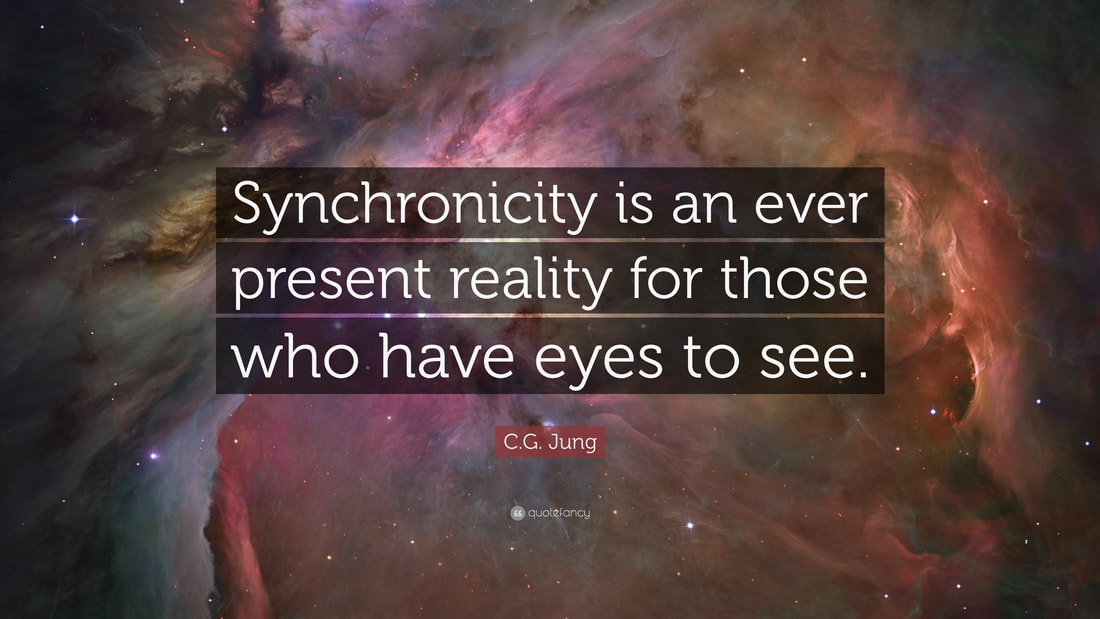
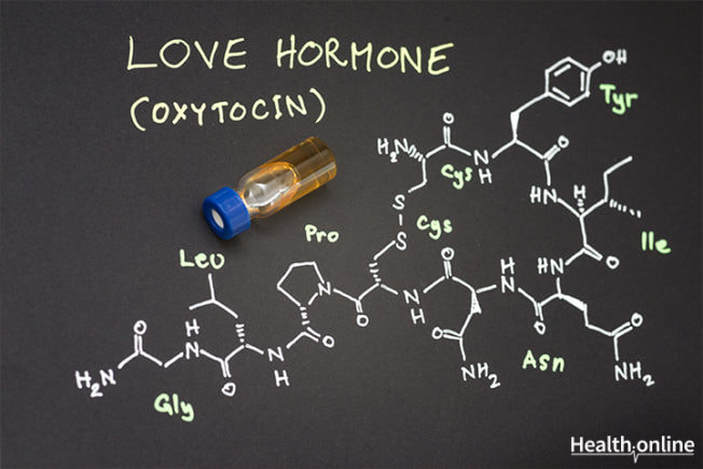
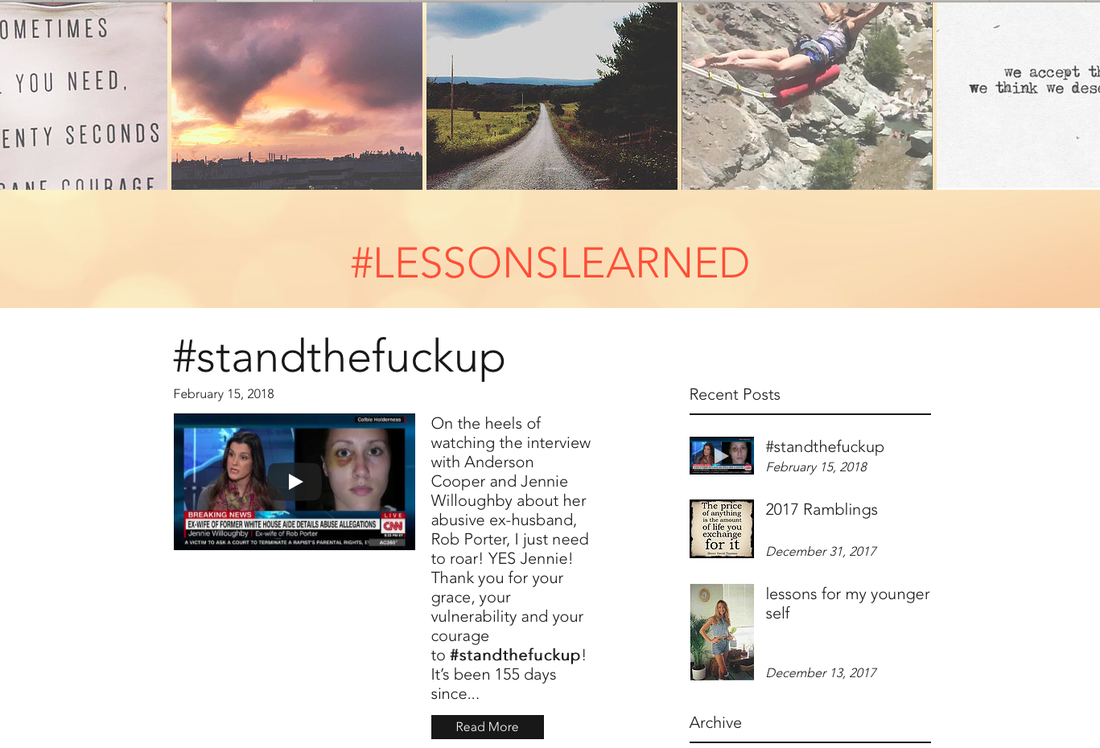
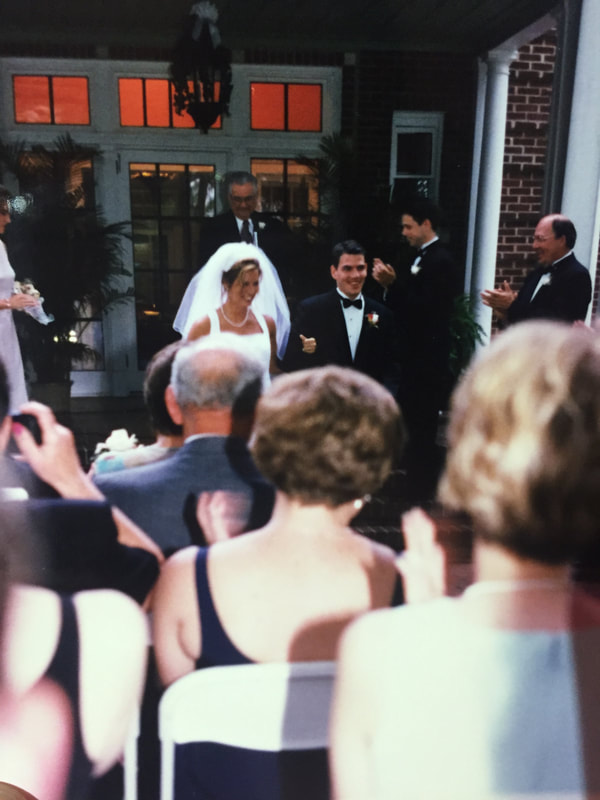
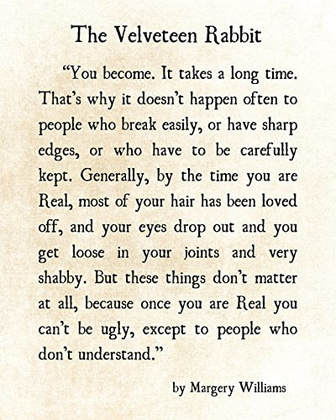
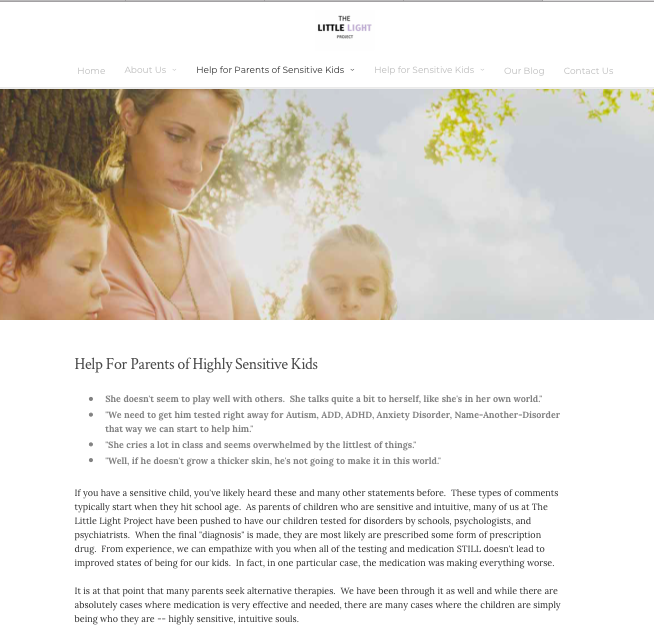
 RSS Feed
RSS Feed


